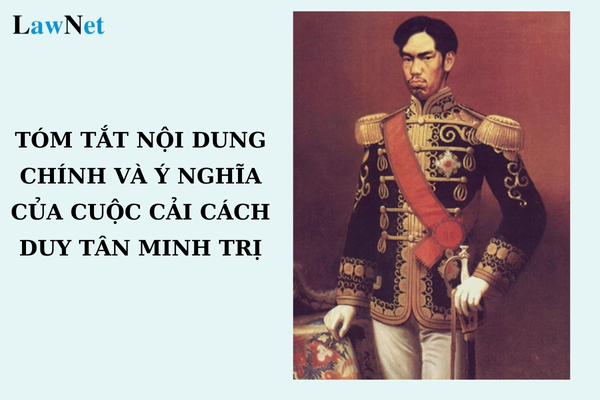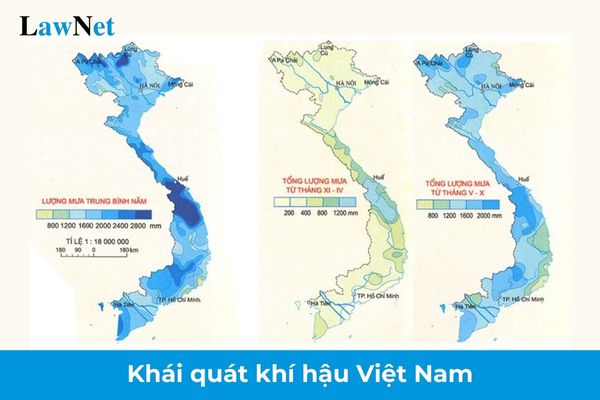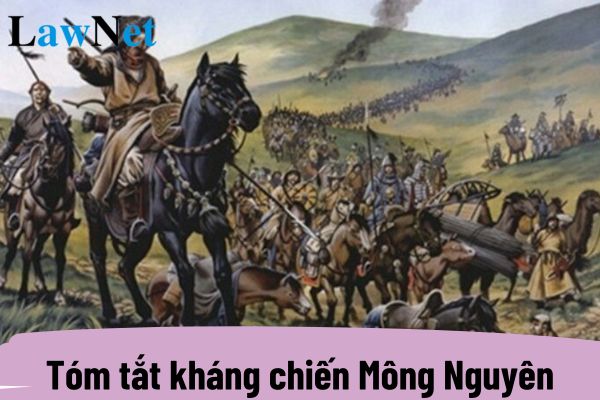Vietnam: What are the causes of the Trinh-Nguyen War and the division of the country into between the South region and the North region? What is the grade at which students will learn about the Trinh-Nguyen War in the History and Geography curriculum?
What are the causes of the Trinh-Nguyen War and the division of the country into the South region and the North region?
The Trinh-Nguyen War and the division of the country into the South region and the North region have deep-rooted causes embedded in historical, political, social, and personal factors. Here are the main causes of this war:
| 1. The power struggle between the Trinh and Nguyen families The direct cause leading to the Trinh-Nguyen War was the power struggle within the Le Dynasty court in the 16th century. After the decline of the Le Dynasty, real power in the Le court was shared among local feudal forces. Among these, the Trinh and Nguyen families were the most powerful, leading to prolonged conflict. - The Trinh family: Held power in Bac Ha (North region). They were major officials in the Le Dynasty court, gradually taking over national administration as the king of Le lost his leadership ability. - The Nguyen family: Initially held power in the South (South region), occupying military positions and leadership in southern provinces. When Nguyen Hoang (a member of the Nguyen family) was assigned to govern the land of Thuan Hoa (Quang Binh and southern provinces), he established a stronghold in this area. 2. Power division after Nguyen Hoang went to Thuan Hoa (1558) In 1558, Nguyen Hoang was assigned by the Le king to govern the land of Thuan Hoa (southern region). This created a clear power division of the country into the two families. Nguyen Hoang's position almost became a base for the formation of South region, while Trinh Kiem (son of Trinh Tung) held power in Bac Ha, forming North region. The unresolved power struggle between them, while the Le Dynasty still existed, led to national division, and the Trinh and Nguyen forces began to confront each other. 3. The weakening of the Le Dynasty court The Le Dynasty court had been weakened for a long time, especially after King Le The Tong's death in 1548 without a strong successor. The Le king became a figurehead, and real power was in the hands of the Trinh lords in North region and the Nguyen lords in South region. Although both families continued to revere the Le king, in reality, they ruled independently, free from court control. This facilitated confrontations, power disputes, and territorial expansion. 4. Political and military conflicts between the Trinh and Nguyen families The Trinh-Nguyen War officially erupted from the late 16th century and lasted until the 18th century, with mutual attacks, land grabs, power struggles, and influence. Major battles, such as the war between Trinh Tung and Nguyen Hoang, further deepened the division of the country into these two territories. As both sides established solid bases and the divisions became more pronounced, the war became more intense. 5. Religious factors and Western intervention In the 17th century, Western traders and missionaries, especially the Portuguese and later the French, had a significant influence in Vietnam. Religious differences between Trinh and Nguyen territories, particularly in the spread of Christianity, contributed to increasing polarization and confrontation between the two parties. While the Trinh lords opposed Christianity and imposed strict policies on foreign missionaries, the Nguyen lords facilitated Western missionaries’ activities and the development of Christianity in South region. 6. Conflicts over control of strategic areas Economic and military development also contributed to this war. North region and South region each possessed unique advantages in resources, trade, and strategic positioning. The Trinh and Nguyen lords both desired control over important areas, such as seaports, fertile lands, and international trade routes. This led to continuous attacks, occupations, and counterattacks between the two sides. 7. Deep-seated division of the country into South region and North region Ultimately, the Trinh-Nguyen War resulted in the permanent division of the country into two parts: North region (ruled by the Trinh lords) in the North and the South region (ruled by the Nguyen lords) in the South. Although warfare subsided by the early 18th century, this division persisted until the Nguyen Dynasty unified the nation in the late 19th century. |
Note: The content is for reference only

What are the causes of the Trinh-Nguyen War and the division of the country into between the South region and the North region? What is the grade at which students will learn about the Trinh-Nguyen War in the History and Geography curriculum? (Image from the Internet)
What is the grade at which students in Vietnam will learn about the Trinh-Nguyen War in the History and Geography curriculum?
Under Section V of the General Education Program for History and Geography issued with Circular 32/2018/TT-BGDDT regarding the required outcomes for Vietnam from the early 16th century to the 18th century in the 8th-grade History and Geography curriculum:
- State the main features of the founding of the Mac Dynasty.
- Explain the causes of the South-North conflict and the Trinh-Nguyen conflict.
- State the outcomes of the South-North conflict and the Trinh-Nguyen conflict.
- Summarize the process of expanding the territory of Dai Viet from the 16th to 18th centuries.
- Describe and state the significance of asserting sovereignty over the Hoang Sa and Truong Sa archipelagos by the Nguyen lords.
- State some main aspects (historical context, development, results, and significance) of the peasant uprisings in the North region during the 18th century.
- State the impact of the peasant movements in the North region in the 18th century.
- Outline the main causes of the uprisings and describe some significant victories of the Tay Son movement: overthrowing the Nguyen and Trinh lords, the Le king; defeating Siamese invaders (1785), and the major defeat of the Thanh invaders (1789),...
Thus, students learn about the Trinh-Nguyen War and the division of the country into the South region and the North region in the 8th-grade History and Geography curriculum.
What are the requirements for assessing the educational outcomes of 8th-grade History and Geography in Vietnam?
Under Section VII of the General Education Program for History and Geography issued with Circular 32/2018/TT-BGDDT, the requirements for assessing the educational outcomes of 8th-grade History and Geography in Vietnam are:
- The assessment objective is to provide accurate, prompt, and valuable information regarding the level of achievement of the objectives required by the History and Geography curriculum and the progress of students to guide and adjust the teaching activities of teachers and the learning activities of students.
- The assessment basis is the necessary achievements regarding essential qualities, general competencies, and specific history and geography competencies as specified in the overall program and the History and Geography subject program;
- Besides theoretical content, it is necessary to enhance the assessment of students' skills such as working with maps, atlases, charts, diagrams, datasets, pictures, observation, data collection, processing, and information systematization, using outdoor learning tools, utilizing technology and information communication in learning,... Assess the ability to apply knowledge to specific situations, not making the assessment centered on the ability to recall historical or geographical knowledge.
- Diversify assessment forms, and increase frequent assessment for all students through various forms: assessment through observing classroom activities; assessment through study portfolios, and learning products; assessment through project reports, practice session reports, and presentations on learning task performance results. Provide opportunities for students to participate in the educational outcome assessment process.
- Educational outcomes are assessed through qualitative and quantitative forms via regular and periodic assessments, thereby aggregating overall evaluations of students' qualities, competencies, and progress.










- What is the sample entry for the Excellent Preschool Teacher Contest? What are the regulations on educational activities in preschools in Vietnam?
- What is the sample argumentative essay on the role of Vietnamese youth in nation building? Is assessing 7th-grade students in Vietnam the responsibility of subject teachers?
- What are the sample introductions for an expressive essay about mother? Are 7th-grade students in Vietnam required to be able to write an expressive essay?
- What are the guidelines for preparing the lesson "Chiếu dời đô" for 8th-grade students in Vietnam? What genre does the work "Chiếu dời đô" in the 8th-grade Literature curriculum belong to?
- How many lessons does the National Defense and Security Education curriculum in Vietnam include?
- What are the Top 3 sample descriptive essays on hometown for 5th-grade students? When are 5th-grade students in Vietnam confirmed to have completed the primary education program?
- What are the best poems about sibling love in the family? What are the regulations on the assessment of the learning and training results of primary school students in Vietnam?
- What are the guidelines for preparing the shortest lesson "Một thời đại trong thi ca"? What are the criteria for selecting text corpus used in the Literature curricula in Vietnam?
- What are the sample argumentative essays on vulgar language and swearing among students? What is the code of conduct for students within schools in Vietnam?
- What are the sample explanative essays on some distinctive qualities of Vietnamese people? What does the writing practice in the 11th-grade Literature curriculum in Vietnam include?

